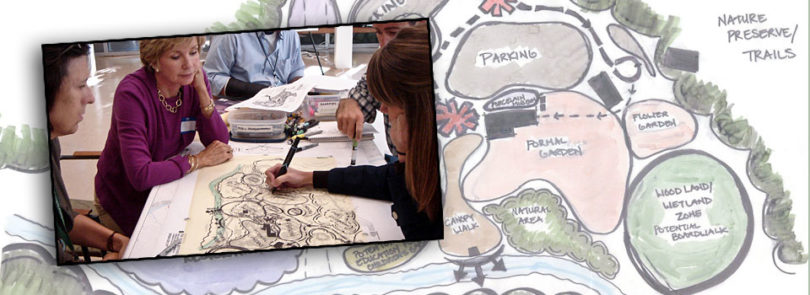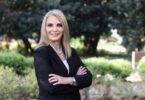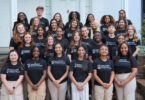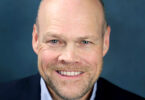The State Botanical Garden of Georgia takes seriously its status as “Georgia’s garden” and its role in complementing the teaching, research and service mission of the University of Georgia. So, when it came time to update the garden’s master plan, it made sense to turn the process into a collaborative learning opportunity.
“There are so many things that go into a garden,” said Wilf Nicholls, the garden’s director. “You have to find places for new gardens, like a children’s garden, and find new ways for visitors to get from one place to another. We wanted to turn the master planning process into an educational and research process as well. It was natural for us to look to UGA’s College of Environment and Design, and they provided a real service to us here at the Botanical Garden.”
Jon Calabria, assistant professor of landscape architecture, and Alfie Vick, associate professor of landscape architecture in UGA’s College of Environment and Design, led the process of updating the garden’s master plan.
Calabria was one of eight UGA faculty members to be awarded a 2011-2012 Service-Learning Fellowship by UGA’s Office of Service-Learning. OSL supports academic service-learning and community engagement initiatives that enhance student learning and respond to community needs. Like the Botanical Garden, OSL is one of eight UGA Public Service and Outreach units.
The Service-Learning Fellows Program is a yearlong faculty development opportunity focused on incorporating service-learning best practices into participants’ teaching, research and public service work. Calabria merged service-learning into his graduate-level studio course “Nature and Sustainability,” which looks at concepts of nature and their implications for landscape architecture, with particular emphasis on the issue of sustainability.
Calabria’s students started by taking an inventory of the environmental and built components of the garden and the surrounding environment. They used Geographic Information Systems, or GIS, to spatially analyze the garden, focusing particular attention on buildings, roads, parking, gardens, passive recreation and conservation. Then they generated maps based on their spatial analysis.
The maps were then used as the basis for a two-day charrette, or creative work session, facilitated by the College of Environment and Design’s Center for Community Design and Preservation. The students stood by as garden staff, board members, volunteers and members of the local community commented and asked questions. The students used the feedback to further refine an overall master plan that will enhance the existing gardens and inform the implementation of new features, including a children’s garden, Center for Native Plant Studies complex, canopy walk, and conservation and restoration areas.
“The students really had to be on their toes through this entire process,” said Calabria. “They had to be ready to respond to many questions about the decisions they made. Now they have this experience and material in their portfolios, and I think it will make them more attractive to potential employers.”
“This is a great example of how students apply the professional and academic skills they’re learning through their coursework to real-world needs,” said Paul Matthews, OSL’s assistant director. “It will have a lasting benefit on the garden and those who visit, while at the same time deepening the students’ experience and learning. This is really what academic service-learning is all about.”
College of Environment and Design faculty and graduate assistants will use the data, maps and public feedback generated by Calabria’s service-learning class to put the finishing touches on the master plan by the end of the summer. Construction on the Center for Native Plants Studies complex has already begun and will be the first component of the master plan to be completed. The plan also will be used to help determine a clear vision of the garden for the next 10 years.
“We have been delighted,” said Nicholls. “We had participation from students, board members, volunteers and staff all working together on the maps and ideas. It’s been a wonderful experience.”








